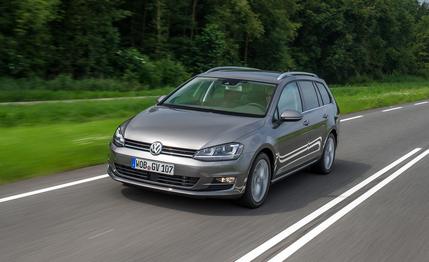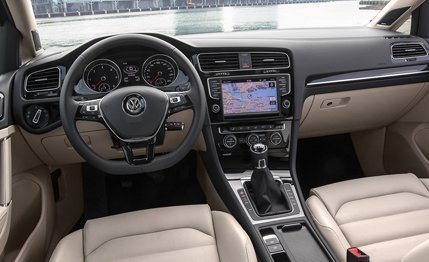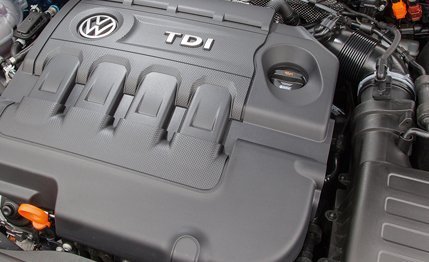
 Prototype Drive
Prototype Drive
Most enthusiasts have vehicular tastes that are quite different from those of the average buyer. We understand the qualities that make, say, the Toyota Camry a sales juggernaut, but we usually prefer something far less mundane for our daily driver. We love driver involvement, which is why we carry a torch for the manual transmission; we appreciate the efficiency and torque of a diesel engine; and when we need practicality, we usually shun crossovers for station wagons, which offer similar versatility but with passenger-car performance. But the pickings can be slim in the States if you require even one of these three criteria—and good luck finding them all in one vehicle. Well, outside of a Volkswagen dealership, that is.
Indeed, the current Volkswagen Jetta SportWagen, which is closely related to the outgoing sixth-gen Golf, is available with a diesel and a stick. Even though it will continue to be sold here for another year or so, the next-generation model is already being launched in Europe, where we recently drove it. Overseas, the car is known as the Golf Variant or Golf Estate; we expect it to drop the Jetta name and simply be called the SportWagen when it arrives here for the 2015 model year. The name change will be executed for the sake of accuracy, as the next SportWagen is derived directly from the MQB-based 2015 Golf, whereas the Jetta soldiers on with the older PQ35 platform.
We spent a day with several Euro-spec variations of the SportWagen, and our favorite by a considerable margin was equipped with—you guessed it—a six-speed manual transmission and the wonderful 150-hp, 2.0-liter TDI. Cruising in light traffic on the autobahn, we could imagine mileage cresting 50 mpg pretty easily, and the diesel emits little more than a reassuring purr. It also delivers when asked to charge forward. VW’s claimed 0-to-60 figure is unimpressive at nearly nine seconds—we predict our testers will be able to hit 60 in about eight—but the gobs of low-end grunt make it feel quick, especially off the line. All 236 lb-ft of torque are served up from 1750 to 3000 rpm.


In Europe, several smaller-displacement gas and diesel engines are on offer, as are five- and six-speed manuals and six- and seven-speed DSG dual-clutch automatics. In the U.S., we’ll get the 2.0-liter diesel four-cylinder (with a urea-based NOx reduction system), as well as a gas-fired 1.8-liter TSI turbocharged four with 170 horsepower and 184 lb-ft. Our transmission choices will be limited to a six-speed manual and a six-speed DSG, which are fine by us.
The move to MQB bones makes the SportWagen lighter than its predecessor, which helps not only powertrain performance and efficiency but also handling. The current Jetta SportWagen is good to drive and rides nicely, but the 2015 car is a bit tighter and bit more athletic in its responses, and the structure feels rigid. All major chassis components are shared with the new-gen Golf, including the electric power steering, which is light but linear and precise.
An incredible number of driver-assistance systems darken the European options list. They are useful, we suppose, for those who choose to devote their attention to activities unrelated to driving, such as juggling coffee cups or checking Facebook on their phones. The U.S.-market specifications haven’t been finalized, but it’s safe to assume we’ll be offered far fewer nannies. The reasons are twofold: VW wants to keep vehicle costs down, and the Mexican factory that will build our SportWagens isn’t set up for the production complexity seen in the European build site. Trust us: You won't miss the stuff.


In addition to its chassis, the SportWagen shares its cockpit and seating accommodations with the Golf, and both are above average for the segment and price level. The materials feel soft and costly, and the instrumentation looks premium. Cargo space more than doubles when you fold down the rear seats, at which point the trunk floor is a full 72.1 inches long. That should be plenty for most families. One caveat is that taller families might want to steer clear, as rear legroom disappears when the front seats are pushed rearward.
Although we’d love to see Volkswagen produce wagon versions of the GTI and the diesel GTD—or even the next-gen Golf R—this SportWagen is the next best thing, offering comfort and practicality in a well-rounded package that won’t bore enthusiasts. In other words, it’s our kind of car.